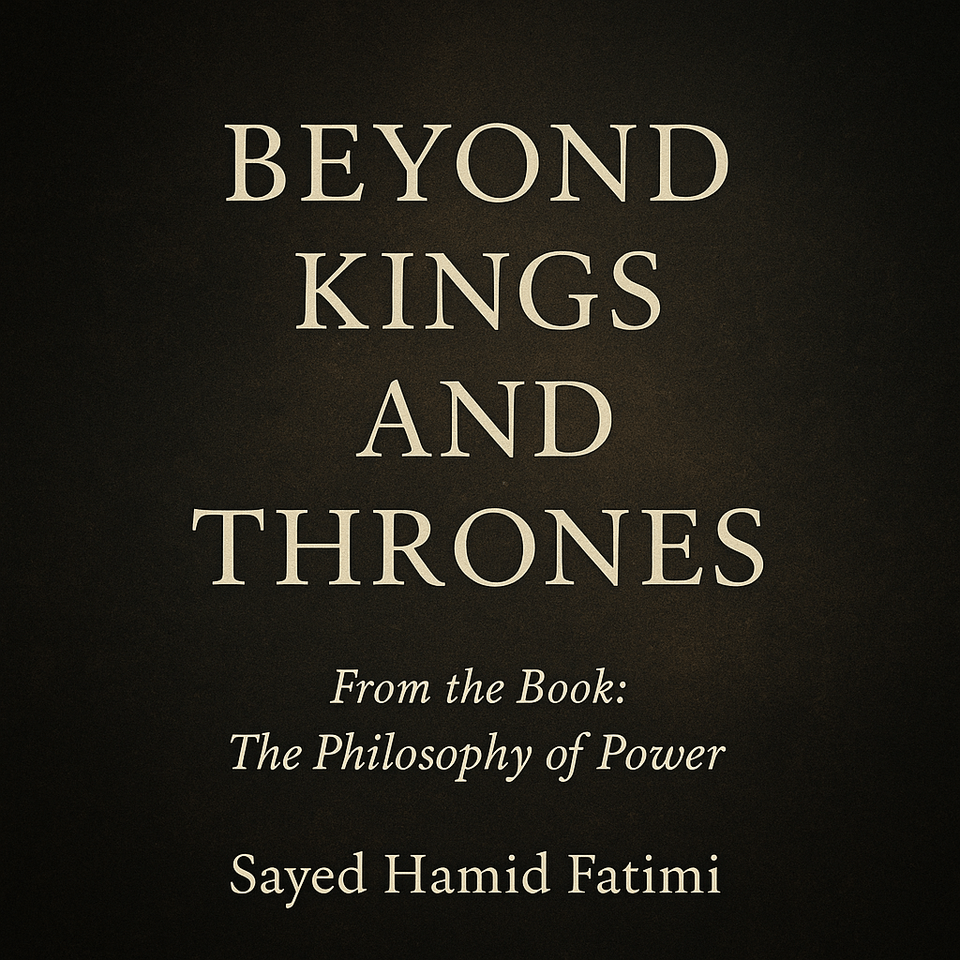
The Velvet Claw: Toward a Post-Institutional Meritocracy
In the quiet chambers of political thought, two seemingly opposing voices share a single room: Niccolò Machiavelli, the ruthless realist, and Maya Angelou, the luminous voice of dignity. Between them stretches the narrow bridge where real power must walk. If power is a claw, let it be wrapped in velvet—not to deceive, but to discipline. Not to soften duty, but to aim it.
We do not need fewer leaders. We need better ones. Verified by deeds, not declared by pedigree. Measured by stewardship, not swagger. Chosen for character under pressure, not charisma on a stage.
This essay sketches a path toward a post-institutional meritocracy: not a throne by birth or brand, but a practice of earned authority—publicly evidenced, transparently audited, always recallable.
Enter the Post-Institutional Meritocracy
A society that refuses to be ruled by spectacle needs protocols that make virtue legible and vice expensive.
What Changes, Concretely?
- Proofs of Service (Verifiable Credentials 2.0) — Portable, cryptographically signed attestations of service (issuer→holder→verifier) with selective disclosure and revocation; covers responses, mentorship, policy craftsmanship. Evidence, not promises.
- Consistency Curves — Longitudinal measures of speech-action alignment across time. Fewer U-turns for applause. More course corrections for truth.
- Stress-Tested Decisions — Simulated crises with transparent scoring of process vs. outcome quality, empathy under pressure, coalition-building.
- Stewardship Index — Aggregate of how well leaders leave things better than they found them—people, budgets, ecosystems, institutions.
- Public Refutability — Every major claim or plan must include measurable conditions for falsification and explicit kill-switch criteria (e.g., “If waiting times don’t fall by ≥15% within 12 months at 90% confidence, sunset the policy and publish a post-mortem”).
These are not algorithms masquerading as fairness. They are protocols that make fairness auditable.
The Human Archetypes
Nelson Mandela — Strategic patience (Machiavellian) allowed him to survive and bargain; compassion (Angelouan) reconciled a fractured nation.
Abraham Lincoln — Masterful in political maneuvering, yet governed with moral conviction; he preserved not just a nation, but its moral compass.
Marcus Aurelius — An emperor who wielded power with humility, leaving behind not tyranny, but timeless wisdom in his Meditations.
These leaders were not accidents of history. They were architects of it, with virtues that can be taught, evidenced, and selected for.
The Gaussian Trap
Most human systems operate within a bell curve. Leadership selection often does too. The result: we optimize for the median and call it stability, while the exceptional—too rare, too often missed—become historical accidents.
In many real systems, performance and impact follow heavy-tailed (power-law) distributions; most value is concentrated in a small tail. Selection mechanisms must therefore seek the tail deliberately, not average it away.
The tragedy of the Gaussian curve is that it rewards conformity, punishes variance, and slowly corrodes excellence. The remedy is not chaos. The remedy is tail-aware design: maintain safety nets and floors, but aim selection at outliers with evidence, not vibes.
The remedy: shift from bell-curve thinking to tail-aware selection. Don’t normalize away the few who can move the average. Optimize for rare combinations, not single metrics.
The Political AI: Merit by Design
Imagine an autonomous, open infrastructure—trained not on ideology, but consequence. Not a single model, but a public stack:
- Datasets with Consent by Design — Opt-in civic records, anonymized aggregates, verifiable credentials, deliberation transcripts; no surveillance. Consent, or nothing.
- Transparent Criteria — Open-source schemas of what we measure and why: alignment, stewardship, coalition capacity, moral courage.
- Audit Trails & Appeals — Every score traceable. Every evaluation explainable. Every person able to contest.
- Adversarial Red-Teaming — Continuous attempts to game the system, with public reports. The game informs the guardrails.
- Privacy-Preserving Proofs — Aggregate reporting uses differential privacy; individual attestations use W3C Verifiable Credentials 2.0 (W3C, 2025) (issuer→holder→verifier) with selective disclosure and, where needed, zero-knowledge proofs—so we can verify service and credentials without exposing raw personal data.
What does it do? It does not decide elections. It qualifies—it surfaces who has earned trust across time. It exposes consistency. It surfaces outliers.
Not an overlord, but an oracle. Not a tyrant, but a filter.
Compliance note. Opt-in data only (via local civic data trusts); purpose-bound processing; no generalized “social scoring”; no solely automated decisions with legal or similarly significant effects; human oversight and a right to explanation & appeal; published model cards and regular external audits; retention limits and right-to-be-forgotten; the stack is restricted to qualification, never selection.
The Score that Isn’t a Cage
We do not reduce a person to a number. We open a dashboard of evidences:
- Integrity Differential — Gap between stated values and observable actions over years.
- Stewardship Delta — Before/after impact on people, budgets, ecosystems.
- Crisis Posture — Decision quality under time pressure.
- Coalition Radius — Ability to align opponents without coercion.
- Harm Ledger — Acknowledged mistakes and reparations made.
We present a multi-indicator, evidence-first dossier—no single composite score. The public still chooses, with eyes open.
A Future Without Thrones
A post-institutional meritocracy does not eliminate power. It reassigns it—to the most worthy. It replaces entitlement with earned trust. It doesn’t enthrone charisma; it cultivates character.
Not performance, presence; not charisma, character. Not rhetoric, repair.
The Velvet Claw Toolkit (First Draft)
Short, concrete moves any city, cooperative, or institution can pilot within a year:
- Merit Ledger — A public registry of verifiable service contributions with attestations and right-to-reply.
- 360° Civic Reviews — Annual, anonymous peer and public reviews for office-holders and candidates; published with responses.
- Crisis Drills — Transparent simulations (wildfire, epidemic, budget shock) with decisions and rationales recorded.
- Power Budgets — Term-limited authority measured in decisions, not years; renewals contingent on stewardship deltas. (Only binding executive actions above a clear threshold count against the budget; routine administration is excluded; any emergency overage triggers a retrospective public review.)
- Transparency Escrows — Pre-signed disclosures (donors, conflicts, interests) auto-released on trigger events.
- Negative Power Tests — Voluntary cessions of control to demonstrate restraint when incentives favor overreach.
- Public Falsification Clauses — All flagship policies list the evidence that would end them (e.g., “If waiting times don’t fall by ≥15% within 12 months at 90% confidence, sunset the policy and publish a post-mortem”).
- Civic Sabbaticals — Mandatory off-ramps between terms for renewal, apprenticeship, and re-grounding in service.
- Open Deliberation Rooms — Recorded, searchable deliberations with summaries, not performative hearings.
- Guardrail Bounties — Rewards for discovered exploits and demonstrated manipulations of the qualification stack.
Failure Modes (and How to Survive Them)
- Goodhart’s Curse — Rotate metrics; publish model cards; adversarial audits and randomly salted evaluation criteria.
- Technocracy Drift — Keep final choice democratic; limit the model to qualification, not selection.
- Data Colonialism — Consent only; local data trusts; right to be forgotten.
- Oligarchic Capture — Forkable public stack; multi-stakeholder governance; sunlight as default.
- Charisma Laundering — Weight demonstrated stewardship over rhetoric. Reward refutation and correction.
How We Begin
Start where legitimacy is weakest and stakes are local: school boards, municipal councils, co-ops. Pilot the ledger. Run the drills. Publish the deltas. Iterate in public.
The point isn’t perfection. It is direction.
Machiavelli understood the machinery of power. Angelou insisted on the dignity of the powerless. We require both—the engine and the compass. Virtù and grace.
This is not a map. It is an invitation.
The seat at the top is up for grabs.
But this time, let’s make sure it goes to the right hands.


